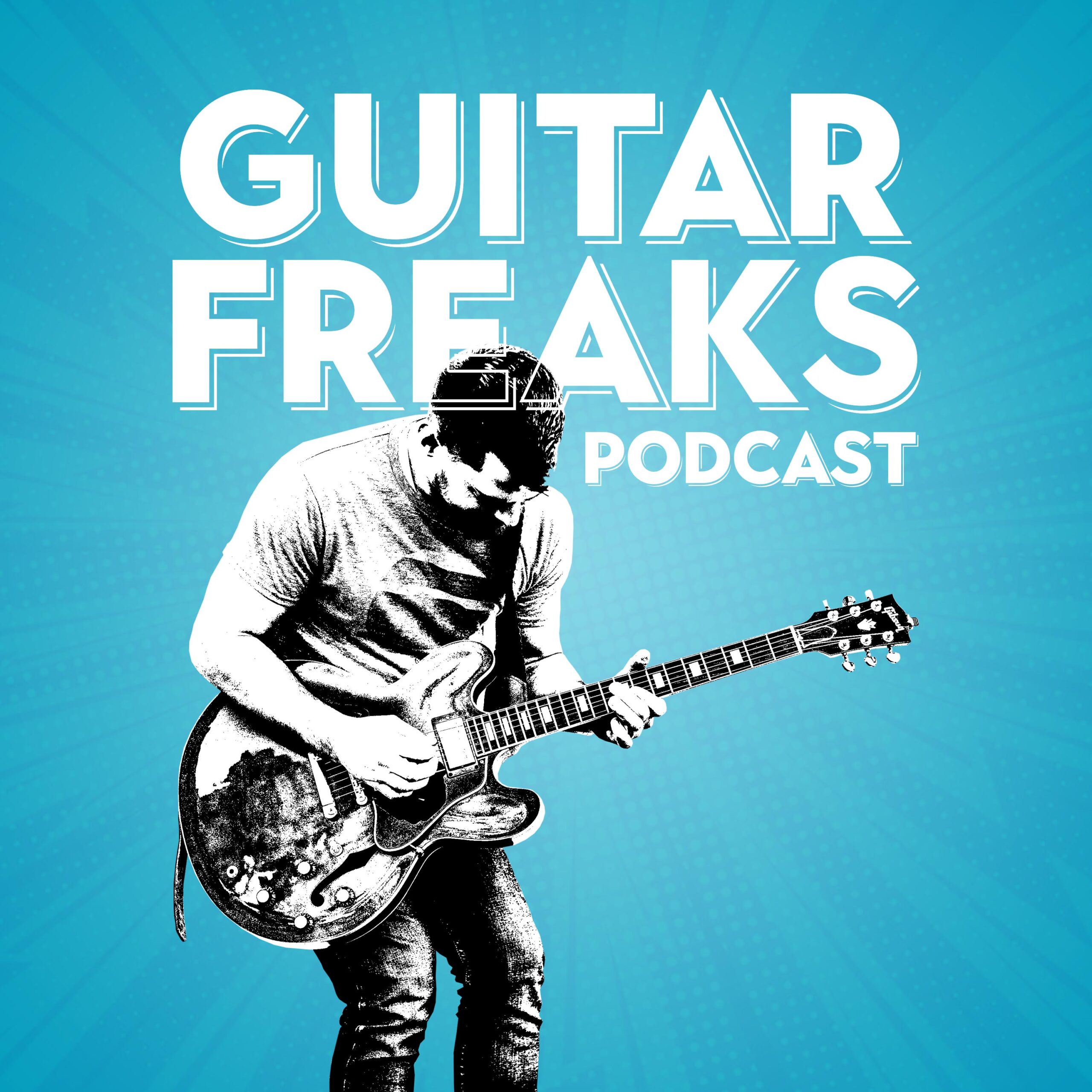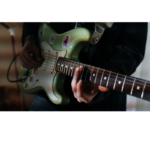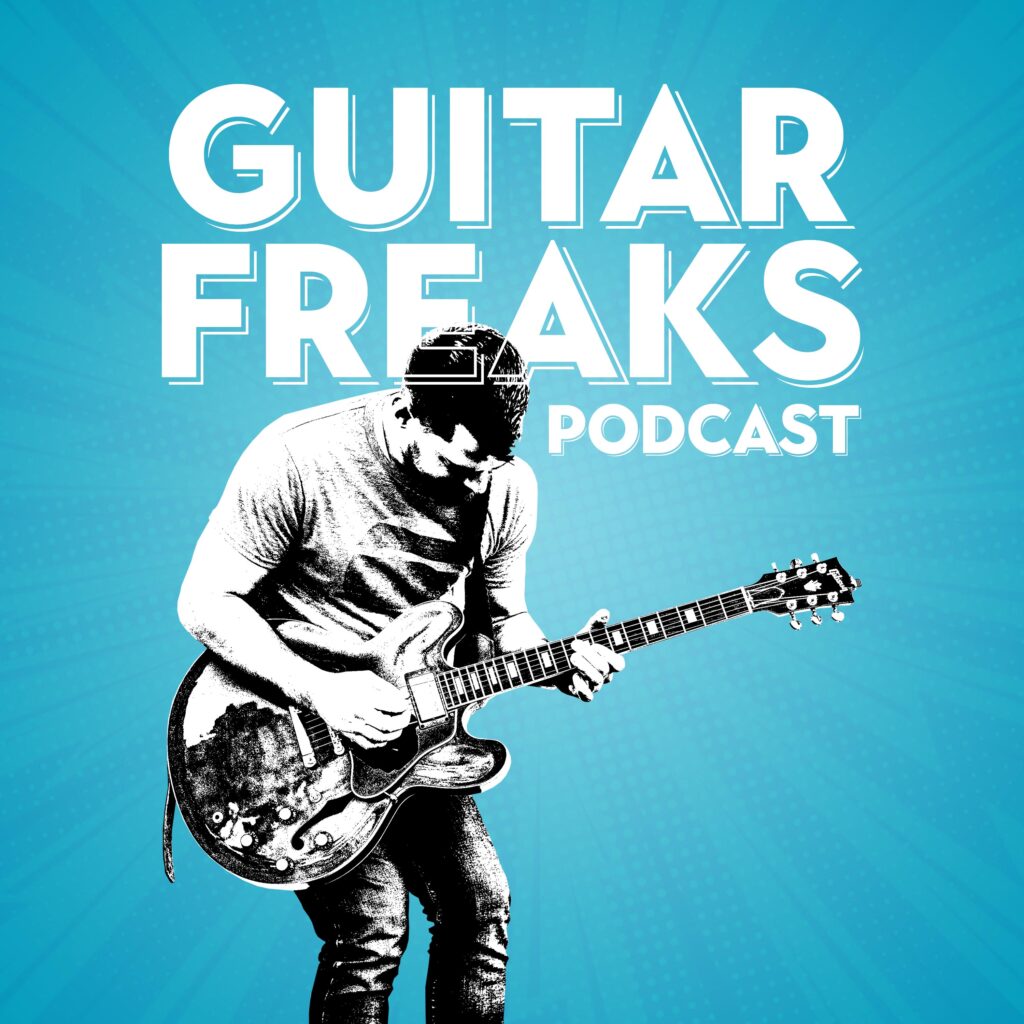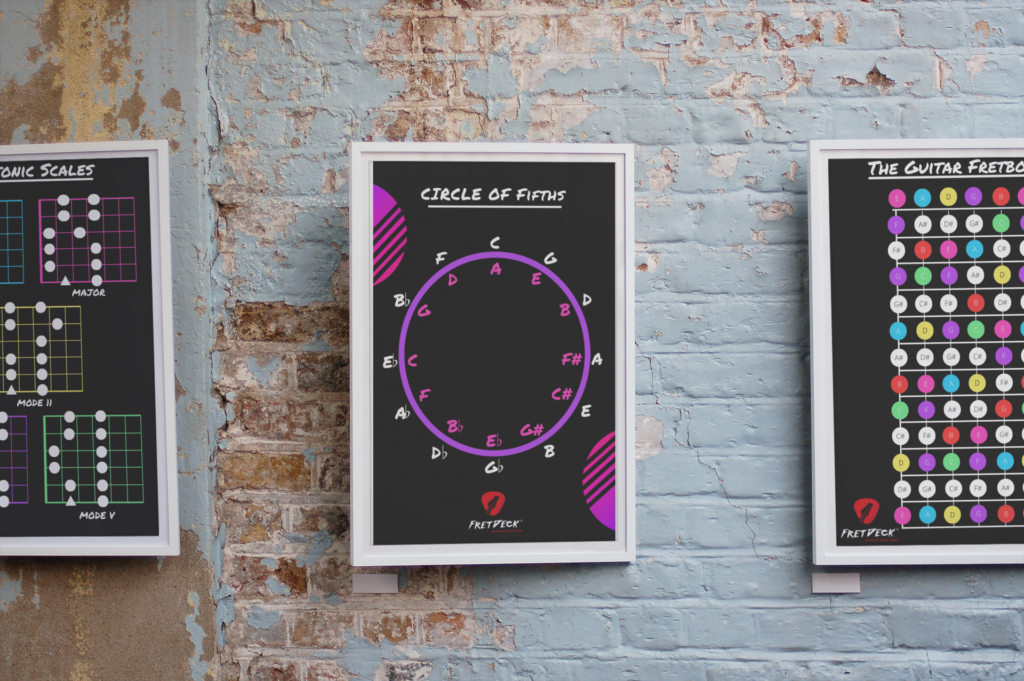Let’s be honest: Most guitar players memorize the five pentatonic positions on guitar… but can’t actually use them to solo freely.
They think they’ve “learned the scale” because they can fly up and down position 1—but ask them to connect ideas across the neck, and things fall apart.
The problem isn’t lack of effort.
It’s misunderstanding how pentatonic positions on guitar are supposed to function.
In this post, you’ll learn:
- Why learning all five positions isn’t the goal
- How to move between positions with purpose
- Simple drills to unlock phrasing, not just patterns
- And a better way to visualize the fretboard
The Position Trap 🎯
Let’s start with what most players do:
They learn this classic box in A minor:
e|----------------5--8--|
B|------------5--8------|
G|--------5--7----------|
D|----5--7--------------|
A|5--7------------------|
E|----------------------|
Great start, but here’s where things go wrong:
They treat each pentatonic position on guitar like a silo.
No movement. No phrasing. No flow.
And the solos? They sound like someone glued together a few disconnected licks.

❌ Stop Guessing. Start Shredding.
If you’re still fumbling through scale patterns and box shapes… it’s costing you progress.
FretDeck™ is the no-fluff system that shows you exactly how to master the fretboard—fast. Early access.
⚡️ This isn’t for dabblers. It’s for players who want results.
👉 Click here to join the pre-launch now
Early access. Limited rewards. Don’t wait.
Pentatonic Positions Are Not the Goal
The five positions aren’t the end game—they’re maps, not destinations.
Real players—B.B. King, Hendrix, Clapton—aren’t thinking “I’m in pattern 3.”
They’re thinking sound. phrasing. movement.
That’s the shift: from pattern-memorization to musical navigation.
How to Actually Use Pentatonic Positions on Guitar
Here are 3 powerful ways to turn shapes into songs.
1. Route Mapping
Start in Pattern 1 (A minor), then slide into Pattern 2 mid-lick.
Go Pattern 1 → 3 → 2 → 5 → 1 again.
Force your brain to build roads, not walls.
2. Horizontal Soloing
Take a lick in Pattern 1 and try playing it up the neck, string by string.
Same lick, new location = stronger fretboard knowledge.
3. Chord-Tone Anchoring
Solo over Am → Dm → E7.
Land each phrase on a chord tone within a pentatonic position.
Now you’re thinking like a composer.
A Better System for Pentatonic Mastery
This is exactly why I created FretDeck: Pentatonic Scales.
Most scale tools just throw diagrams at you.
FretDeck gives you:
- All 60 pentatonic positions in every key
- Visual phrasing prompts
- Insights on modes within the pentatonic scale
- A path to true fretboard fluency
If you’re tired of playing “boxes,” and ready to play music, join the Kickstarter pre-launch now:

❌ Stop Guessing. Start Shredding.
If you’re still fumbling through scale patterns and box shapes… it’s costing you progress.
FretDeck™ is the no-fluff system that shows you exactly how to master the fretboard—fast. Early access.
⚡️ This isn’t for dabblers. It’s for players who want results.
👉 Click here to join the pre-launch now
Early access. Limited rewards. Don’t wait.
Want to fix your phrasing?
Read this: Why Most Guitarists Misuse the Pentatonic Mode
Final Thought:
Pentatonic positions on guitar are just a framework.
The music happens between the shapes, when you move with confidence and intention.
Make the fretboard your playground—not your prison.










